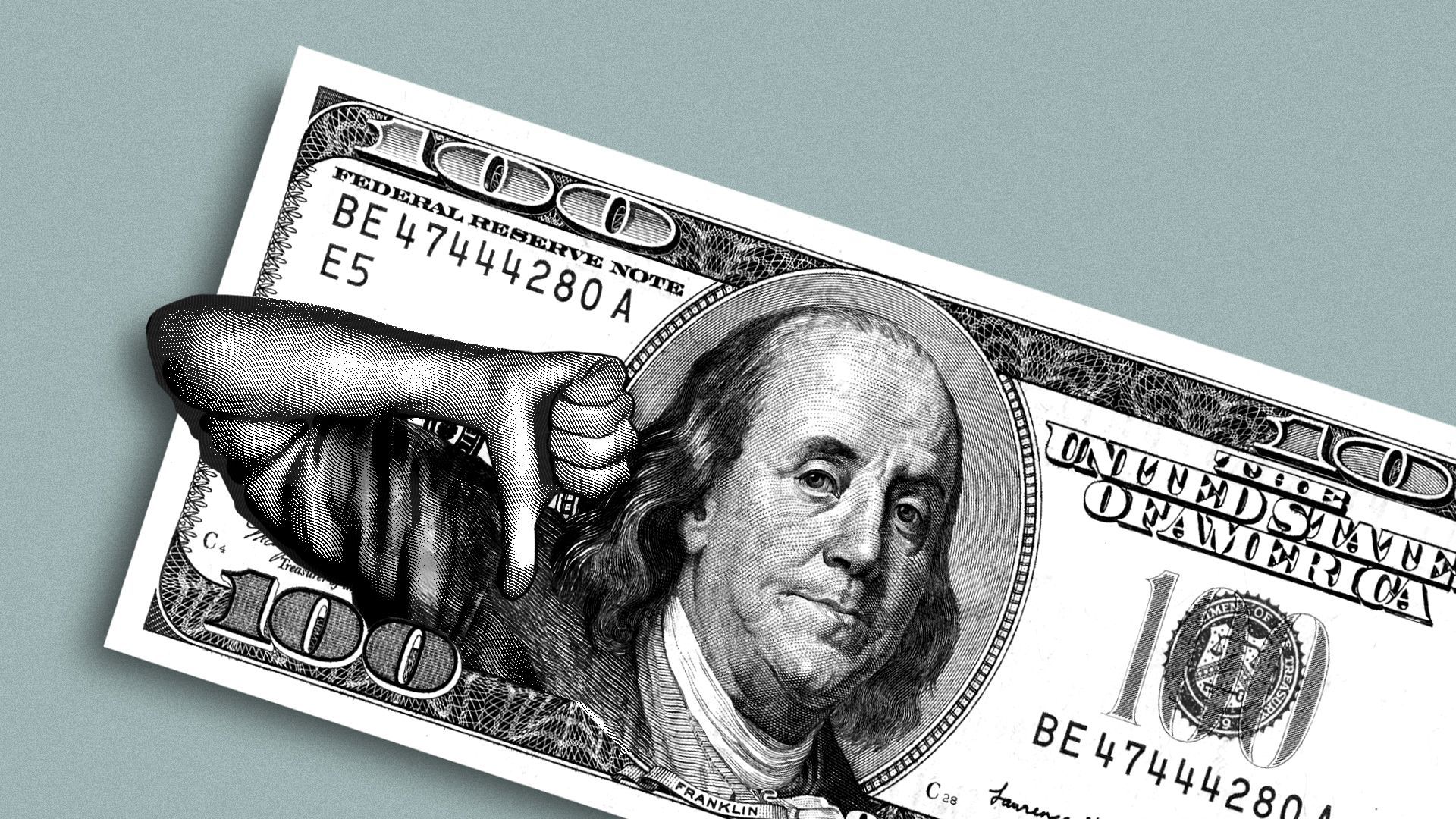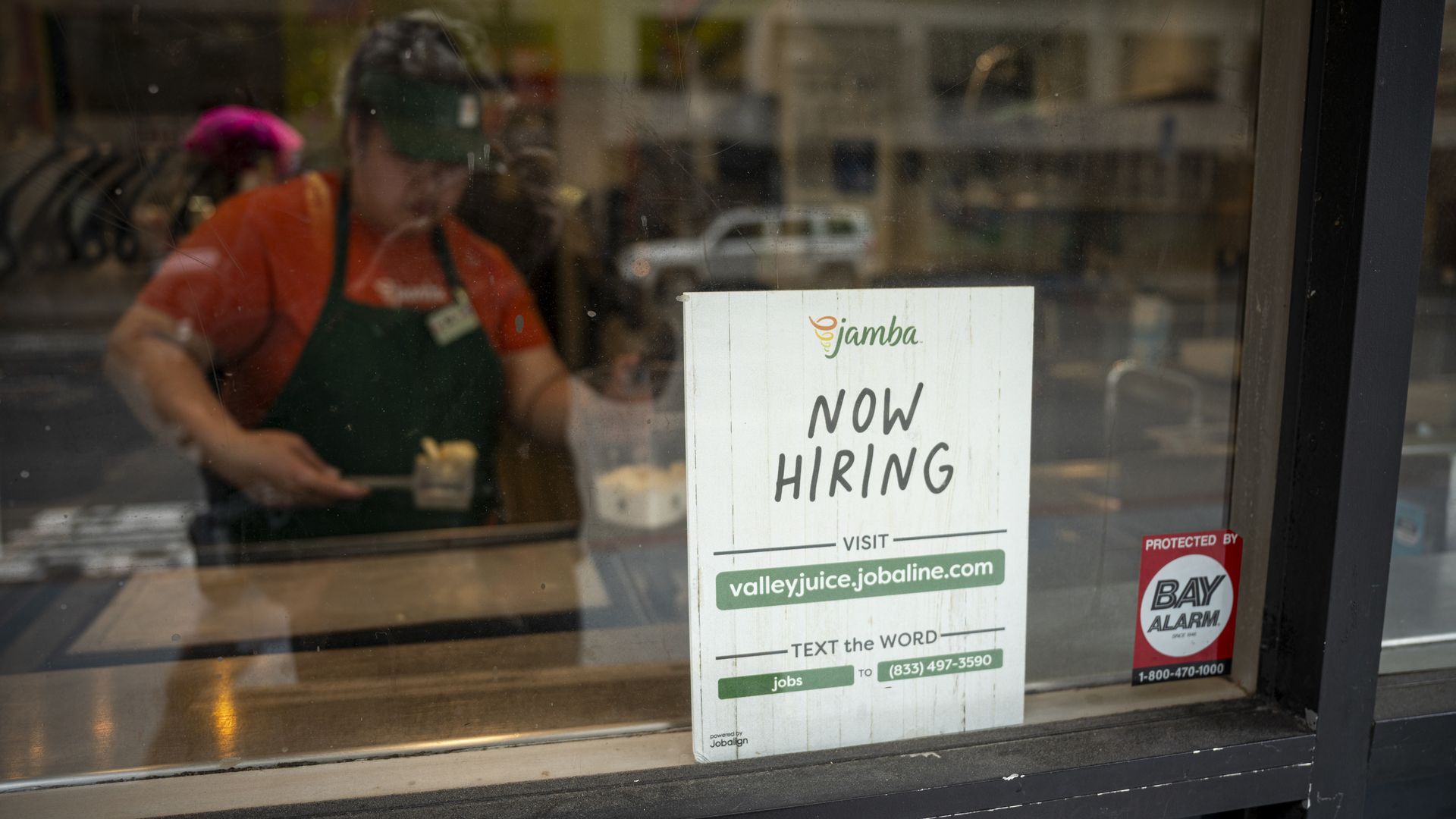August 02, 2023
The United States lost its perfect credit rating after yesterday's late-afternoon downgrade by Fitch. Below, a look at the strange reasons behind the credit agency's decision.
- Plus, inside new jobs figures from ADP and what they don't say about what's ahead for Friday's official payrolls report.
Today's newsletter, edited by Javier E. David and copy edited by Katie Lewis, is 694 words, a 2½-minute read.
1 big thing: Fitch's odd downgrade logic

Illustration: Annelise Capossela/Axios
Fitch Ratings downgraded its assessment of the U.S. government's creditworthiness yesterday afternoon, declaring that Uncle Sam is a mere AA+ rated credit, no longer AAA.
- It was a weird decision, not because the U.S. fiscal outlook is pretty (it isn't) but because of Fitch's stated reasons.
Why it matters: The U.S. government does face tough fiscal tradeoffs in the decade ahead, with interest costs poised to eat up a growing share of the economy, deficits crowding out private investment and Social Security facing steep automatic cuts in 2033.
- But the issue isn't so much one of creditworthiness, as implied by the Fitch downgrade. It's when, and on what terms, those adjustments happen.
What they're saying: In their downgrade, Fitch analysts cited "the expected fiscal deterioration over the next three years, a high and growing general government debt burden, and the erosion of governance" compared to peers "over the last two decades that has manifested in repeated debt limit standoffs and last-minute resolutions."
- They also note a potential recession ahead.
Yes, but: The resolution of the debt ceiling standoff in June was a surprisingly orderly affair, in which it became clear that House Republican leadership and rank-and-file members weren't looking to default on the debt.
- A government shutdown is possible this fall, given sharp partisan divides over federal appropriations. Yet this has been a semi-regular feature of how the U.S. government operates since 1995.
And while a recession later this year is certainly possible, the odds of one have started to look more remote in recent weeks amid a flood of solid economic reports and more benign inflation data.
- Federal Reserve staff economists are no longer forecasting one, chair Jerome Powell said last week.
- Just this morning, Bank of America economists backed off their call, now seeing a soft landing ahead.
Between the lines: There is no doubt that U.S. policymaking can be a messy affair and that the current deficit trajectory is problematic. But it's not as if credit analysts have special insight into the scale of those challenges or how likely they are to spill over into some kind of default or crisis.
- After all, the market for U.S. Treasury securities is among the most scrutinized in the world, forming the bedrock of the global financial system for a reason.
Sign of the times: On Aug. 6, 2011, the S&P downgrade the day before dominated the upper-right quadrant of the New York Times front page. In today's edition, the Fitch downgrade didn't make A1 at all.
Go deeper. https://www.axios.com/admin/eden/editor/story/deec0bf9-3e43-4079-81ad-a4f7d98273a3/content
2. Private sector employment cools slightly

Photo: David Paul Morris/Bloomberg via Getty Images
Private sector hiring boomed in July, but the pace of jobs growth did slow from the previous month, according to ADP's latest employment report.
By the numbers: Private employers added 324,000 jobs to payrolls, down from the 455,000 added in June (which was revised lower by 42,000 jobs).
- Pay growth continued to recede. The median change in annual pay from a year ago among job-stayers was 6.2%, down from 6.4% in June. Among job-switchers, annual pay rose 10.2%, down a full percentage point from June.
Why it matters: The data, compiled from the payroll processor's trove, suggests cooler hiring conditions underway among private firms. At the same time, employment and pay trends remain strong across most industries.
- The consistent exception is manufacturing, which shed payrolls for the fifth straight month. Meanwhile, leisure and hospitality continued to lead the way in hiring.
What they're saying: "The economy is doing better than expected and a healthy labor market continues to support household spending," Nela Richardson, ADP's chief economist, told reporters this morning.
- "We continue to see a slowdown in pay growth without broad-based job loss."
Worth noting: Following a revamp of the report last year, ADP's numbers aren't intended to forecast the government's official jobs release, Richardson said.
- That survey-based report, out Friday, is expected to show the economy added 200,000 jobs in July.
- June's blowout ADP number led some economists (and financial markets) to believe the labor market was heating back up. Subsequent data from the government suggested that wasn't the case.
The bottom line: "This is a data point whose motivation is to accurately represent private sector employment, not predict Friday's numbers," Richardson said.